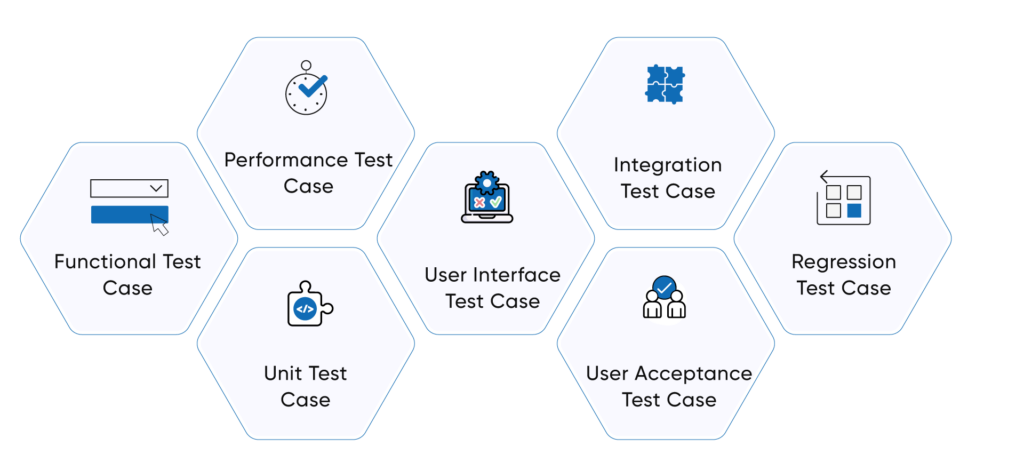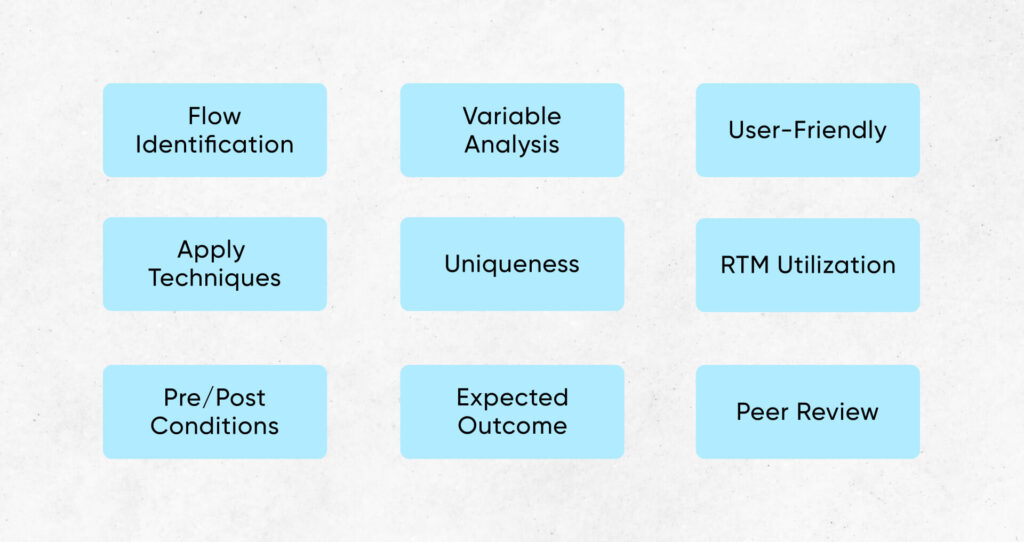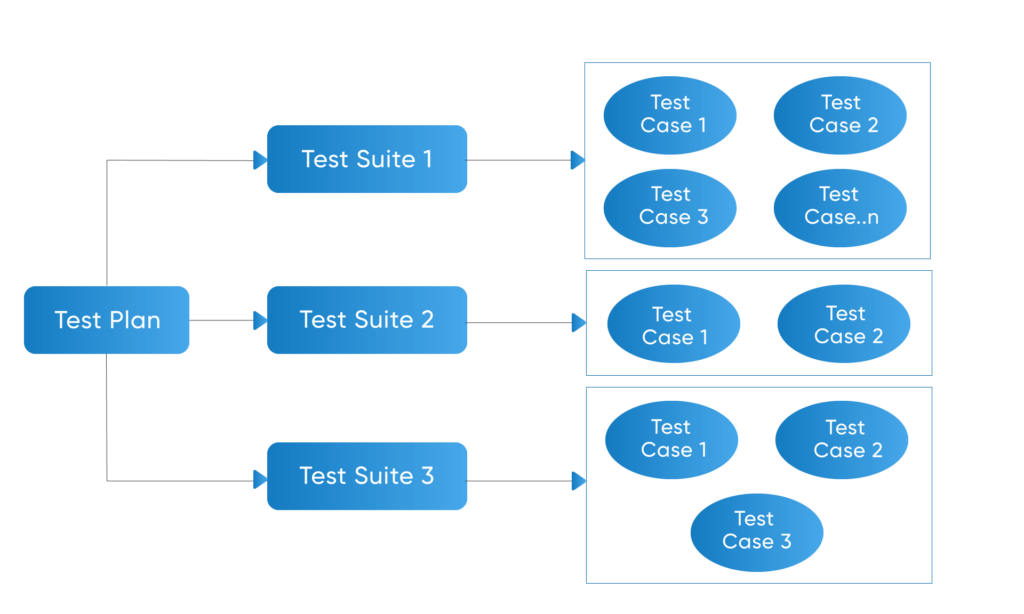How to Write Test Cases: A Step-by-Step QA Guide

What is a Test Case?
The prime objective of any project is to deliver quality output. To attain this, software development companies test their application before they release it to the market. However, to test the software, test engineers should have test scenarios and test cases written. The customer can help write the test cases with the help of a requirement document.
Test Case document details test data, prerequisite or pre-conditions, expected results, and post-conditions (if applicable) that define a single test to achieve a particular feature. Testing team members generally write test cases, which can be like system testing instructions. Testing of any application begins once the development team finishes the development of the feature. The customer can help write the test cases with the help of a requirement document.
The system must define what to do as per the requirement with the help of test data, prerequisites, test steps, and expected results. Test Cases help software testers and developers find the error in the system, which gives assurance of a quality product. Overall, writing test cases will improve business optimization with the quality of the product. Clients are more satisfied.
Test case format:

Test Cases Vs Test Scenario
Below are some critical differences between the Test Case and the Test Suite:
| Test Case | Test Scenario |
| Test Case defines a way of testing a feature. | A test scenario is one of the many use cases for an application feature. |
| A test case is more focused on many small details and exhaustive testing. | A test scenario is more focused on the use case. |
| A test case tells you what to test and how to test. | A test scenario only tells you what use case to test. |
| A test case requires time for execution. | A test scenario requires fewer resources and time for execution. |
| A test case includes information like test data, steps, expected results, prerequisites, etc. | A test scenario only includes the functionality to be tested. |
Different types of test cases:
There are various types of test cases as below:

Functional test case:
Functional test cases are more focused on the black box testing approach, which helps testers test the feature to ensure it’s working as expected as per the requirements.
Performance test case:.
Performance test cases provide an ability to track an application server’s performance and ensure its ability to accommodate user requests for a specific duration, using tests like load testing, stress testing, and volume testing.
Unit test case:
We use unit test cases to test the individual units and ensure that they work as expected according to the requirements. The development team is generally responsible for writing and executing unit test cases.
User Interface test case:
We also call UI test cases user interface test cases. We use these test cases to test the UI elements of the application and verify that they look as expected.
Integration test case:
Integration test cases are used to determine how the different features of an application behave when they interact with each other. These cases can cover the entire use case of the requirement, which is more important to test the entire application.
User Acceptance test case:
User Acceptance test cases are designed to ensure acceptance of the application. Application stakeholders generally use these cases, which can be executed in different environments compared to development and testing.
Regression Test case :
Regression test cases are used to verify that the recent changes made in an application are not affecting the existing features of an application.
How to Write Test Cases
Test Cases are “Blueprints” that test engineers can test the application. So, the test cases must be obvious, thorough, and accurate.

Below are some points which need to be considered while writing the test cases:
- Identify the end-user application flow combination from the specific test scenario.
- Find out the variable in modules and calculate Permutation and combination.
- Test cases should be easy to understand and execute for any other test engineer.
- Understand and apply relevant test techniques like spread, reduction, etc.
- Test case ID should be unique.
- Use the Requirement Traceability Matrix(RTM) in test case design for better visibility and tracking purposes to ensure all requirements are covered.
- Include a crystal clear description of the test cases.
- Add proper prerequisites and post-conditions to each test case.
- Specify the expected result in test cases.
- Get your test cases peer-reviewed before starting execution.
Standard Test Case Format
We at Thinkitive Technologies use a standard format of test cases, which have the following sections:
- Test Case No.
- Module/Sub-Module[Optional]
- Type of test case like Functional or UI [Optional]
- Test Case Description or Summary
- Prerequisite
- Test Steps
- Test Data
- Expected Result
- Post Conditions [Optional]
- Status [Pass/Fail]
What Are the Best Practices for Writing Quality Test Cases?
Write test cases that can be reused and maintainable whenever possible. The requirements constantly change concerning the web application or specific functionality you are testing. However, test engineers can save time and energy by creating test cases that are reusable and maintainable.
Test cases should be written from the actual user’s perspective in mind. It is usually said that the Quality Assurance Engineers are the first customers using the application. So thorough and detailed test cases will help you to achieve the desired quality results efficiently.
Test Suite vs. Test Plan:
The primary difference between a Test Plan and a Test suite is that a test Suite is a collection of test cases, whereas a Test Plan is a collection of Test Suites.
Test Plans are meant to be created for every sprint release, whereas the test suite can be reused again for multiple sprints from a Regression testing perspective.
Test Plan contains information about what type of testing has to be performed at what time, whereas Test Suite contains the test cases for Regression, UAT, and Sanity testing and does not give an idea when to test.
The test Manager or Test Team Lead can create a Test Plan, whereas a Software Tester can create a Test Suite.
A Test Plan is an up-to-date document that accompanies the team till the end of the project. At the same time, the test suite accompanies the team till the closure of testing.
Test Suite vs. Test Plan Diagram:

Conclusion
Test cases and scenarios are the essential components of the software testing process. It is used for feature verification and bug detection, ensuring that software meets requirements and delivers optimal performance. It also ensures that the application meets the requirements.
Creating comprehensive test cases and scenarios ensures maximum test coverage and thorough application examination. Overall, the importance of test cases and test scenarios should be high to ensure the reliability and quality of software products.
By implementing these best practices, software development teams can deliver reliable, high-quality software products that meet the end-user’s expectations.





Amazing! This blog looks just like my old one! It’s on a entirely different subject but it has pretty much the same page layout and design. Superb choice of colors!
Ahaa, its fastidious dialogue on the topic of this paragraph at this place
at this weblog, I have read all that, so now me also commenting at this place.
I am no longer sure the place you’re getting your info, but great topic.
I needs to spend a while finding out much more or understanding more.
Thanks for great info I was in search of this information for my mission.
Hi there Dear, are you in fact visiting this web site daily, if so afterward
you will absolutely obtain nice knowledge.
Great site you’ve got here.. It’s hard to find quality writing
like yours nowadays. I truly appreciate individuals like
you! Take care!!
Great article, exactly what I needed.
Hello i am kavin, its my first occasion to commenting anywhere, when i read this paragraph i thought i could also create
comment due to this sensible paragraph.
Excellent post. I was checking continuously this weblog and I’m inspired!
Extremely useful info specially the final section :
) I deal with such information a lot. I used to be seeking this particular information for a long time.
Thanks and best of luck.
That is really interesting, You’re a very professional blogger.
I have joined your feed and look forward to seeking extra of your great post.
Additionally, I’ve shared your site in my social networks
Saved as a favorite, I like your web site!
Nice post. I was checking continuously this blog
and I am impressed! Extremely helpful info particularly the last part 🙂 I care for
such info much. I was seeking this certain info for a long time.
Thank you and good luck.
I’m excited to discover this page. I wanted to thank you for your time
just for this fantastic read!! I definitely really liked
every bit of it and I have you saved as a favorite to see new information in your blog.
If some one desires to be updated with most recent technologies then he must be pay
a visit this web site and be up to date daily.
What’s up to every body, it’s my first pay a quick visit of this web site; this blog
carries amazing and genuinely good stuff designed for readers.
Hi there! Someone in my Myspace group shared this website with
us so I came to check it out. I’m definitely loving the information. I’m bookmarking
and will be tweeting this to my followers! Fantastic
blog and outstanding design and style.
Quality articles or reviews is the key to attract the users to go to see the web site, that’s
what this website is providing.
Your method of telling everything in this article is truly nice,
all be capable of easily know it, Thanks a lot.
Really appreciate you sharing this post. Keep writing.
There’s certainly a great deal to know about this issue.
I like all the points you’ve made.